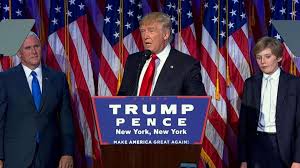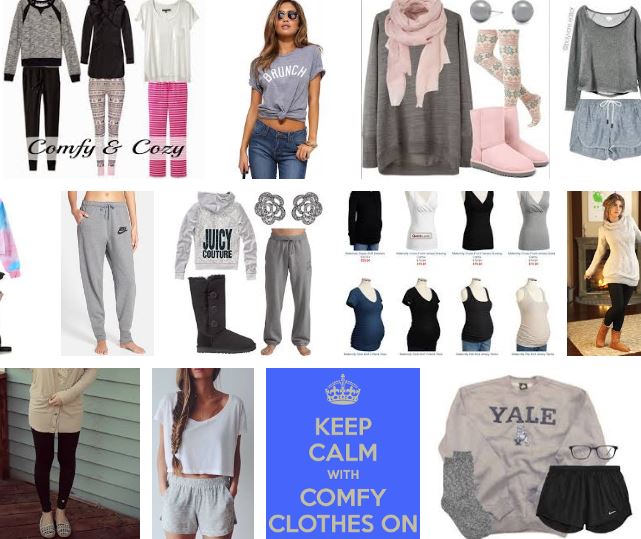
In June 2016 Hillary Clinton accepted the nomination in a white pantsuit designed by Ralph Lauren. The outfit echoed a man’s suit jacket, with widened lapels, a deeper v-cut in the front, and a wider skirt to the jacket. She wore white on white on white, a deliberate reference to the deployment of white by suffragists in the late 19th and early 20th century.
Clinton’s deliberate, thoughtful use of her clothing styles and color is an intellectual act. I mean here that she thinks carefully about what her clothing conveys to onlookers — an interesting aspect of a woman famed for her supposed struggles with fashion (my earlier entries on Clinton’s fashion include Yellow submarines and Give them the cold shoulder,)
Her memoir of her experience as the first female candidate for president, What Happened, is itself a thoughtful, often intellectual narrative. Her choice of title, an interrogative (What [the hell] Happened?) and a declarative statement, “[Here’s] What Happened” cue the reader to the story coming up. This is a storyteller who is well-read, considerate of what she does (in that she carefully thinks through her own motivations, insofar as she can do that).
And what happened to her was marked in her mind by the clothes she wore when it happened. For example, as she and Bill Clinton make their way down the hallway towards the inaugural platform, she wears the white suit and coat designed for her own oath-taking that will never happen. The suffrage movement lasted an unforgivably, achingly long time, with more setbacks than victories. Astonishingly, women fought for the right to vote — a most basic act of citizenship and a necessary right to attaining rights as women — from 1848 to 1920. For Hillary Clinton, her own failed run for the presidency is an unnecessary setback for a female president. So she wore white, a defiant gesture, and an affirmation of the 65.8+ million votes she received, far more than her opponent.
When she was forced to concede the election that preceding November 2016, what she wore was important. In her memoir, she outlines why purple lapels and the purple blouse under her jacket mattered and why the white suits before this moment were symbolic.
As she writes, “That morning, Bill and I wore purple. It was a nod to bipartisanship… The night before, I had hoped to thank the country wearing white — the color of the suffragettes —….Instead, the white suit stayed in the garment bag. Out came the gray and purple one I had intended to wear on my first trip to Washington as President Elect.” (18)
Interestingly, she and Bill Clinton had selected a symbolic gesture of bipartisanship, and fully expected to make the colorful attempt to mend fences after a rancorous, really rather horrid campaign experience. Her opponent made no such gesture, although VP-elect Mike Pence did, strategically wearing a blue tie. Trump’s son wears the neutrality gesture of a white tie. Or at least, one must assume it was intended as a neutral sign and not a deliberate nod to suffragism.

What the men wore mattered to Clinton as well. In one anecdote from her memoir, she takes pride in the fact that while during the inaugural ceremony others (such as hapless George W. Bush) struggled with their sad little limp ponchos when the inevitable downpour started, Bill Clinton was wearing a trench coat. Not by accident, either. As Clinton writes, “It started to rain, and people around us fumbled with the thin plastic ponchos we’d been given.

Backstage, I had urged Bill to wear his trench coat. The day was unusually warm, and Bill didn’t think he needed it. Now he was glad he’d worn it — a small wifely victory on a torturous day.” (7) “[A] small wifely victory” in the midst of the momentous loss of the Presidency, a private domestic win in the place women were historically relegated to. Hillary likely is aware of the irony of her own penned sentence.
The clothing then, at this point, is still worn on an intensely public stage: we see the two of them walking out into the amphitheater, he cloaked in the wifely gesture of a trench coat in case of rain; she in her white suit and coat, with a symbolic gesture towards loss rather than the planned-for victory. She’s well aware their clothing will be read as public statements (including by myself), but she is shifting towards the private, intimate meaning of clothing. Wifely concern, caretaking, attention towards others.
This turn to private gestures in clothing was the result of the her defeat. In her memoir she describes the emotional and physical pain of losing. After her concession speech, she and her husband were driven an hour back to Chappaqua, New York. They pulled into their drive, and “That day, the sight of our front gate was pure relief to me. All I wanted to do was get inside, change into comfy clothes, and maybe not answer the phone every again. I’ll confess that I don’t remember much about the rest of that day. I put on yoga pants and a fleece almost immediately.” (19)
Comfy clothes are everything a female politician is not supposed to be. Literally, we don’t want our public figures to be comfortable, as in unrestrained and unconstrained in their clothing choices. And for women, to be “comfortable” would be to lack power, to be cast in the caretaking mode. It’s to wear soft, loose knit clothing; to wear a monochrome palette of black, greys, and cream. It’s flat boots, long loose tops, fleece and cotton. It’s the clothing of forgetfulness, of a lack of memory, a lack of self-discipline.

(image: results from google image search “comfy clothes”)
Famously, the day after the election a disappointed Hillary supporter ran into Mrs. Clinton as they both walked in the woods. In the facebook photo, Hillary wears “comfy clothes” — black yoga leggings, a black cotton knit top, and a sensible waterproof coat with pockets. 
In another “Hillary in the Woods” sighting, she wears the same black shirt, leggings, now with a blue coat and scarf. Hair unstyled and pulled back, no lipstick. Comfy clothes.

In her book, Hillary outlines her self-care regimen — reading books, yoga, hiking, dogs, grandchildren, friends. She forces herself to engage with others even when it’s painful to do. She finds herself doing what she has done her political life: reassuring others she can make it better, as she consoles people distraught and upset from the election. She slowly ventures out (Vanity Fair provides a look at three of her “post-election” outfits with limited analysis).
Most politician’s memoirs don’t deal with the challenges of clothing and style, the morass and the strengths that women face when they have public careers. Clinton’s memoir sees fashion and style as intimately connected to the worlds of power. Surprisingly, at the end, Hillary finds that the ways clothing connects one to family, consolation, privacy, and sorrow are equally powerful.

